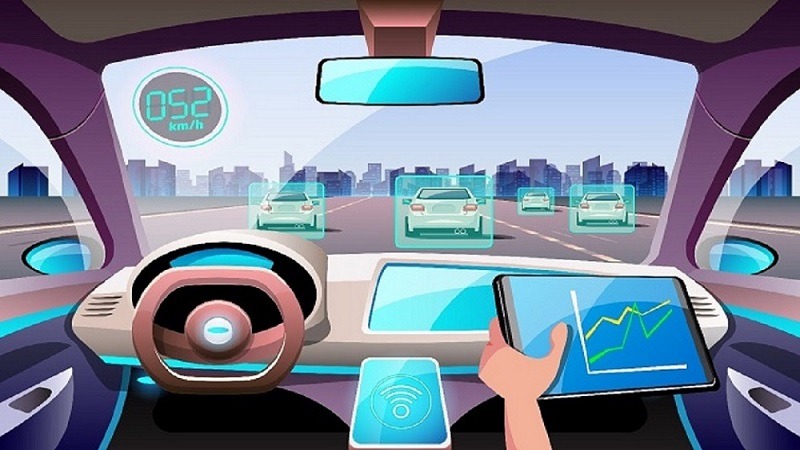Key Disadvantages of AI in Education: Challenges and Concerns
AI technology is proliferating and is being used in many areas, including schools. AI can make learning more personal and grading work by itself.
The negative effects of AI in education can be seen when students become overly reliant on AI tutors, neglecting traditional learning methods.
Let us look at some of the challenges of putting AI into schools.
Teachers and AI: A Future Perspective
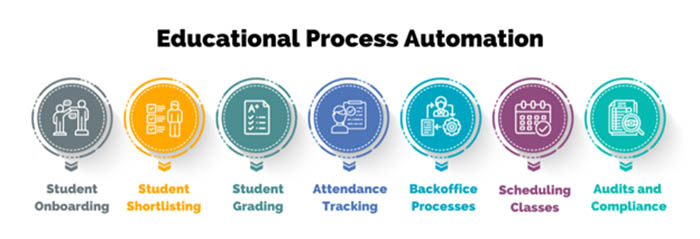
In the realm of education, the integration of Artificial Intelligence Business Solutions brings about both benefits and drawbacks.
One big worry with AI in schools is that it might cause teachers to lose their jobs.
As AI gets better, it could take over some teacher tasks like giving lectures, marking work, and helping with simple lessons.
Automation of Teaching Tasks
AI technologies have the power to take over tasks like giving talks, marking work, and helping with simple teaching duties.
This might save money and make things run smoother. However, it also worries people about what will happen to human teachers and the risk of them losing their jobs.
The negative effect of AI in education is the possibility of widening the gap between affluent students with access to advanced AI tools and those without. Partnering with a leading Generative AI Development Company can help mitigate these concerns by ensuring equitable access to AI-powered educational tools and fostering inclusive learning environments. This collaboration can also facilitate the development of AI solutions that complement rather than replace human educators, enhancing educational outcomes for all students.
Devaluation of Human Expertise
As AI technology gets better, we might start to overlook the valuable skills and personal touch that human teachers offer in learning.
This could make people less aware of the important roles and unique abilities of real-life teachers in education.
Biased and Unethical AI Systems
AI technology reflects the fairness and ethics of the data and the rules it learns from. If the learning material is unfair or if the rules carry biases, then the AI could spread those biases in places like schools.
Perpetuation of Societal Biases
When AI learns from data or methods that aren’t fair, it can make the unfairness we see in society based on race, gender, or how much money people have even worse.
This means that some students could be treated unfairly, making the gaps in education bigger. Wrong Ways to Get Data and Worries about Keeping Things Private
Using AI in schools might mean gathering and looking into information about students. This makes people worry about whether students’ privacy is protected and if their details are safe.
Depending Too Much on Technology and Not Enough on Each Other

Exploring the cons of AI in the education sector reveals several concerns.
Even though AI can make learning better, relying on it too much and not having enough real-life talking and interacting with others could be bad for how students get along with each other and understand their own and others’ feelings.
The Negative effects of AI in education arise when personalized learning algorithms fail to address the diverse needs of students adequately.
Personal Connections and Social Skills
Educational activities led by AI might not offer the personal touch and group interactions important for growing students’ understanding of emotions, talking abilities, and how they get along with others in general.
Decreased Motivation and Engagement
When learning doesn’t include a personal touch or connections, students might not feel as eager or involved. This can make the learning experience not as good.
Concerns about Privacy and Data Security
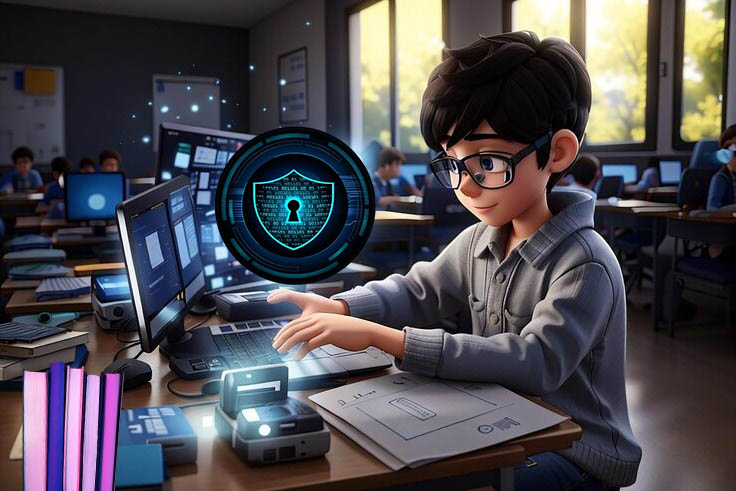
Using AI in schools means a lot of student information gets gathered and looked at closely. This situation makes people worry about keeping that information private and safe.
Unauthorized Access and Data Breaches
When schools collect student information for computer systems, there’s a chance outsiders could get in or the data could leak. This might expose private details and put students’ privacy at risk.
Data Misuse and Exploitation
Also, there’s the worry that this student info might be wrongly used or sold, which is not right because personal details are important.
Accessibility and Digital Divide Issues
Bringing AI into classrooms could create extra obstacles for some kids, particularly those from less wealthy families or those with disabilities.
Unequal Access to Technology
Kids from areas where there’s not a lot of money or help might not get to play with awesome new gadgets as much.
This could make the difference between kids who succeed and those who struggle even wider.
Challenges for Students with Disabilities Getting Access
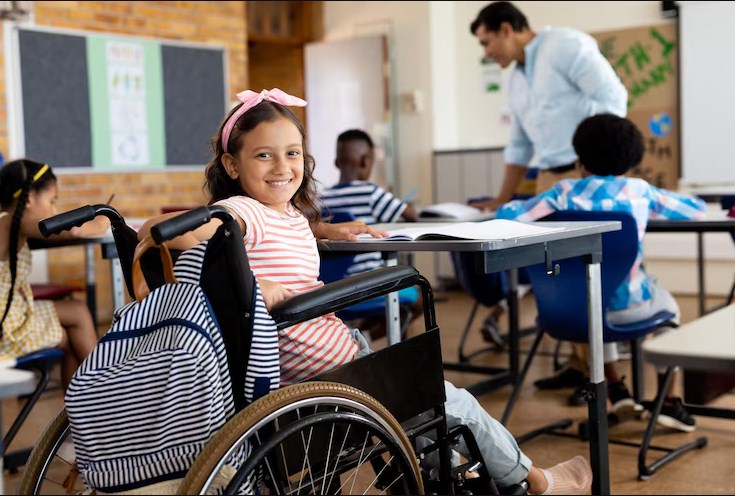
AI might not always think about the needs of students with disabilities. This can make things hard for these students who need special help or tools to learn.
Ethical and Moral Considerations
Using AI in schools brings up big questions. We have to think about how technology affects the way we grow and learn. Also, is it okay to let machines take over teaching?
Dehumanization of Education
There’s a worry that leaning too much on AI for learning could make the whole experience less personal.
Instead of seeing each student as a unique individual, there’s a risk they might just be seen as numbers.
Tough Choices and Unexpected Results
Putting AI into education can bring up tough ethical choices and unexpected outcomes that might affect not just today, but also what comes next for us all.
Changing How We Learn

The cons of AI in the education sector reveal several challenges. One challenge is Changing how we learn.
Bringing AI into learning can change old ways of teaching and how we understand them.
This means teachers and schools will need to make big changes and learn new ways to teach.
Overcoming Hurdles in Embracing AI for Learning
Introducing AI into schooling might be tough because teachers and schools often prefer the old way of doing things.
This can make it hard to get them on board with new technology, possibly causing some disagreements.
Need for Comprehensive Training and Support
Teachers and school leaders might need a lot of training and help to use AI well in their classes and schoolwork, which could take a lot of time and effort.
Dependence on AI and Potential for Errors
When schools use AI more and more, there’s a chance we could lean on it too much. If these AI tools stop working right or make mistakes, it could cause big problems.
Potential for Errors and Biases
Even though AI technologies are advanced, they can still make mistakes or have biases. This could negatively impact how well students learn and their overall results.
Problems with Being Clear and Responsible
AI technologies aren’t always easy to understand. This makes it hard to find and fix any mistakes or unfairness, leading to worries about being open and responsible for actions.
Costs and Resource Allocation

Adding AI to schools can be expensive. It needs a lot of money for tech, the setup, and teaching staff about it, which might mean less cash for other important educational needs.
High Implementation and Maintenance Costs
Buying, setting up, and keeping AI systems running can cost a lot of money. This might make it hard for schools to spend on other necessary things like paying teachers more or fixing up buildings.
Need for Ongoing Training and Adaptation
Tech is changing fast, and AI in our schools has to keep learning new tricks to stay smart and helpful.
Continuous Learning for Teachers
As AI keeps getting better, teachers have to keep learning too. They need to know all about the latest AI tools so they can use them well in their classes.
Keeping Up with New School Ways
Schools have to be quick on their feet because of how AI is changing things. They might need to change how they do stuff big time.
New problems like cheating could pop up because of AI in schools.
AI Helping Cheating
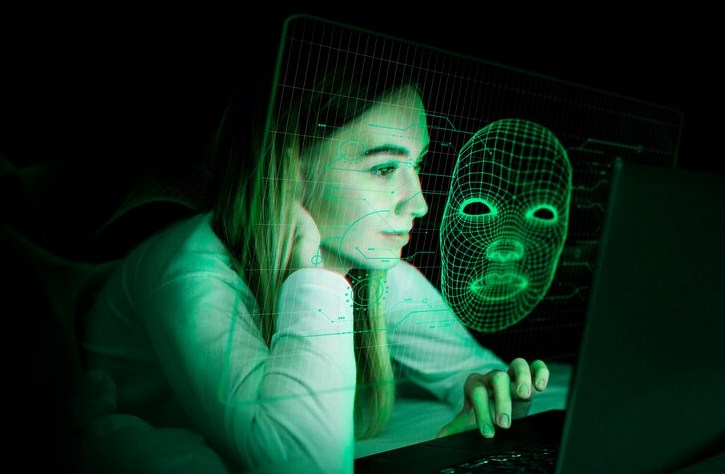
With AI that can write essays or solve math problems, some students might cheat on their work. This makes it hard for teachers to know if students understand their lessons.
Fake Students
AI could also make fake student accounts for online classes or tests. This means schools have to be extra careful about who’s earning grades and degrees.
AI’s great at teaching facts but not so good at teaching us how to get along with others or come up with cool new ideas.
Missing Human Touch
Even though AI is a super smart education solution, it doesn’t get how people feel. This means students might not learn how to deal with real-life talks and make friends.
Stuck in the Box
Relying too much on AI might stop students from being creative or thinking outside the box since AI likes clear-cut answers.
Depending on companies for school AI tools could cause headaches like worrying about keeping private stuff safe and what happens if these tools suddenly stop working.
Data Privacy and Security Risks
When schools use outside companies for their AI needs, they might be putting their students’ private information at risk.
This happens because the schools don’t have much say in how these companies handle and protect the data.
Being Stuck with One Company
When schools pick a certain company’s AI service, they may find it hard to change to a different one later on.
This can also make it tricky for them to work with systems from other companies, which might limit their options down the line.
Resistance from Educators and Cultural Barriers

AI technology is becoming more common in schools, but not all teachers are keen on using it.
In some cases, the challenge comes from worries about losing jobs or not wanting to leave behind old ways of teaching.
These concerns can make it tough for AI to be fully accepted and used effectively in education.
Cultural and Generational Divides
Different age groups and people from various cultures might not all feel the same way about using AI in schools.
Some older teachers or those with specific cultural backgrounds might not be as quick to use new tech. Meanwhile, younger people could be more open to it.
Conclusion
In short, AI has a lot of potential to make learning better and help students achieve more.
But, it’s important to think about the downsides and challenges that come with using AI in education.
If we pay attention to these issues and work on them, we can bring AI into schools in a good way.
This means using AI to help and enhance learning, without taking away from the important role teachers play.
FAQs
1) Is AI good for learning, even with some risks?
AI is super helpful but we can’t forget it has some problems. The best way is to use it wisely and carefully, making sure the bad stuff is controlled by rules and people looking after it.
If we’re too quick to use AI without thinking about safety, it might cause more trouble than help.
2) How do we stop AI from being unfair in schools?
It’s really important to check the AI systems very well to find any unfairness in the information they learn from or how they make decisions.
Involving diverse stakeholders in this vetting process helps identify blind spots.
AI tools should also provide transparent reasoning for their outputs to enable examination for potential discrimination.
3) What can schools do to bridge the digital divide with AI?
Working together, companies and governments can make learning about AI more accessible to everyone by providing free internet, offering affordable gadgets, sharing helpful software for free, and training teachers in communities that need it the most.
Adding lessons on AI into everyday school subjects will get every student ready for a future where AI is everywhere.
4) Is keeping student information safe something to worry about?
Yes, the mass collection of sensitive student information for AI systems poses significant privacy risks like data breaches, misuse, and lack of consent.
Robust data governance with stringent security, clear opt-outs, limited retention periods, and student/parent control over their data is essential.

